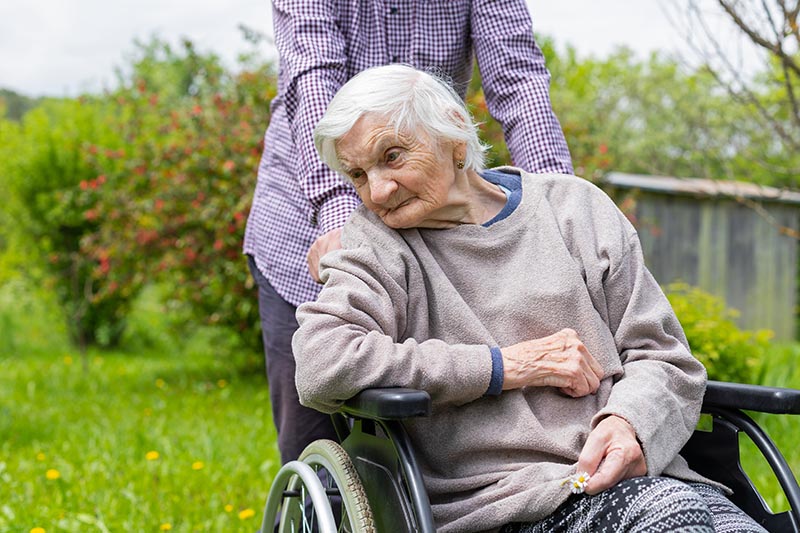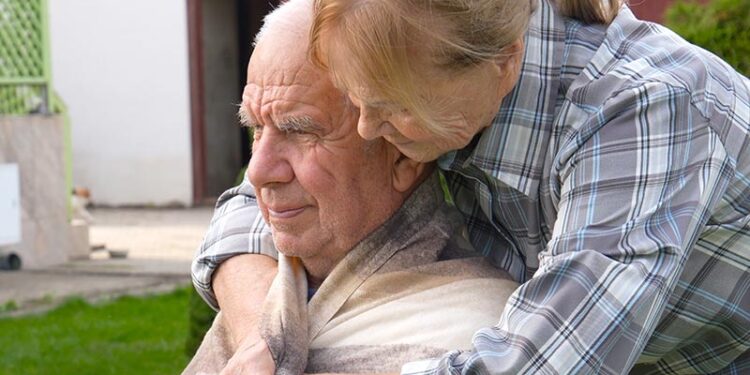Imagine you are a journalist interviewing two very dedicated ladies who have put their heart and soul into building an exemplary, everyday network for people with dementia and their relatives for eleven (!) years. Suddenly you get the news that the article has to be completely rewritten. This is because services have recently been massively reduced and
Municipal budgets are coming under pressure and savings have to be made – I am well aware of that. But anyone who cuts back on services for older people and their family carers, of all people, is saving at the completely wrong end. This takes pressure off families and is politically and economically short-sighted. A commentary by editor Anja Herberth – in light of current events.
We’re on a collision course with reality
In my practice, I talk to many people from the social economy, I research and interview people about dementia and the like, what older people and their (caring) relatives need. Places in care homes are rare, but often they are not needed. Above all, people need support to be able to live as independently as possible in their own four walls for as long as possible. What has been built up here regionally is very valuable.
Because when I talk to politicians, it becomes clear that despite the increasing need for care services, savings are being made wherever possible. After all, demographic change is in full swing: according to the OEC, the continuous increase in the working-age population will stop in 2025 and it will begin to decline.
Being able to stay at home is therefore not only the wish of many people – anything else is simply no longer affordable. And the specialist staff are not available either. On the contrary: nursing homes are often only partially occupied because the prescribed care ratio cannot be met due to the shortage of specialist staff.
I am all the more baffled when support programs for older people and their family caregivers are scrapped. If care increasingly has to take place at home, then help is at least needed to develop this. So that families have guidance on how to cope with this challenge. Families are often completely at a loss and hardly anyone is prepared. That is also the reason why these cuts are so easy to make: No one has any idea that these benefits are essential for families.

What such programs do – and why they are irreplaceable
Where it works, municipalities are joining forces with associations, GPs, pharmacies, care homes, administration, building yards and volunteers. Brugge (Belgium) is not just a picturesque tourist magnet – the city shows how to build an age- and dementia-friendly city: interdisciplinary cooperation produces practical solutions that have an immediate impact.
An important component is the training of the entire municipal environment: from the sales force to banks, retail and catering to the building yard and waterworks, employees are made aware of how to deal with older people and those suffering from dementia. Even bus drivers are involved to ensure that those affected get off safely at the right stop; stores find unbureaucratic solutions if payment is no longer possible. Particularly relieving: regular day/half-day care so that relatives can catch their breath, attend appointments or simply recharge their batteries.
The result: Safety, dignity and suitability for everyday use – right where life takes place. Want more ideas? Seating with a higher seat in public spaces (to make it easier to stand up); cultural accompaniment so that people with dementia can participate as a matter of course (e.g. special museum tours); easily accessible information evenings; even
This structure is not only jointly funded by the federal states and municipalities, but volunteers also make a significant contribution. This mixture of professional coordination and voluntary support makes municipalities resilient – and relieves the burden on professional care and budgets.
Care affects us all: We all have parents, grandparents. If people are left alone with the challenge of care, this has a deep impact on the family structure. The reputation of politics is already very weak, the governments in Germany and Austria are unpopular – and it is not getting any better by leaving the people alone. My opinion: We should not be surprised by the rise of the radical political fringes. The challenges facing families are growing and they are being left alone with the solutions.
Why these cuts are “madness”
If coordination and key points are eliminated, the network disintegrates: Low-threshold services become fewer or disappear completely, volunteers lose contact points and the affected families lose participation and relief models. The result is a visible deterioration in the everyday lives of those affected and a silent cost push into other parts of the system.
Many municipalities are facing the same constraints: There is a lack of money, funding programs are costly in terms of bureaucracy and project management, and in some places even existing activities are being scrapped out of necessity. What brings short-term savings in care,
- The savings are hitting exactly the wrong targets. The services keep people well at home for longer, i.e. exactly where they want to live – and where care can be organized in the most sustainable and cost-effective way. Advice as early as possible, low-threshold relief and an age- and dementia-friendly environment reduce risks, stabilize families and avoid expensive escalations.
- The savings destroy multiplier effects and the existing levers that make regions dementia- and age-friendly. The care and burden remains on the shoulders of individuals who gradually burn out. If cuts are made here, system knowledge that cannot be replaced overnight will also be lost.
- Unplanned savings demotivate volunteering and partnerships. Volunteering needs coordinated structures, support and recognition. If these structures are dismantled, the network will fray – volunteering will not step in “by itself”.
- The savings ignore demographic realism. There is already a shortage of skilled workers and low-threshold services. Saving now will exacerbate the shortage tomorrow – with all the consequences for safety, health and quality of life.
What local authorities should do now – instead of cutting back
- Ensure coordination: The role that holds the network, training, volunteering and services together is systemically relevant. Without it, the building blocks that help people to live at home for as long as possible fall apart.
- Prioritize everyday life on site: Seating, safe routes, cultural events, information evenings and day care are small levers with a big impact – be sure to keep them.
- Strengthen volunteer work: Good coordination (today there are more than just Excel lists for this!) plus training and reimbursement of expenses are investments in regional stability, not “nice-to-haves”.
- Connecting business and services of general interest: Integrating banks, retail, gastronomy and transport into training courses – this is relatively inexpensive, but creates tangible accessibility in everyday life.
- Agree on predictable financing: Set up country-community models and (where appropriate) subsidies in such a way that reliability is created – instead of ad hoc savings that destroy structures.
Especially when budgets are tight, intelligent priorities are needed – not the red pencil for those who have the least lobbying power. Services that ensure
Yours, Anja Herberth / Editor
Email: anja@sbc.co.at
Author: Anja Herberth
Chefredakteurin















